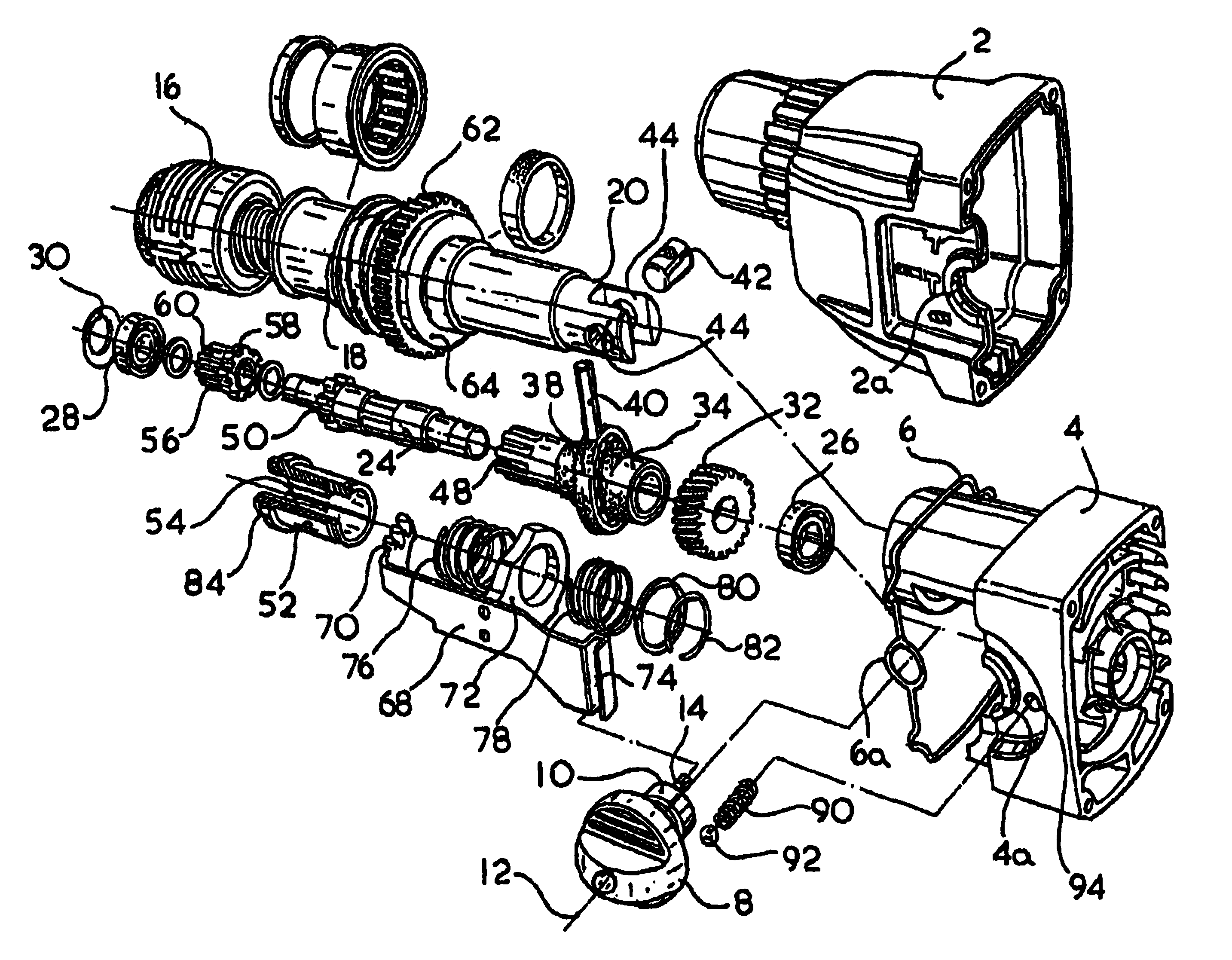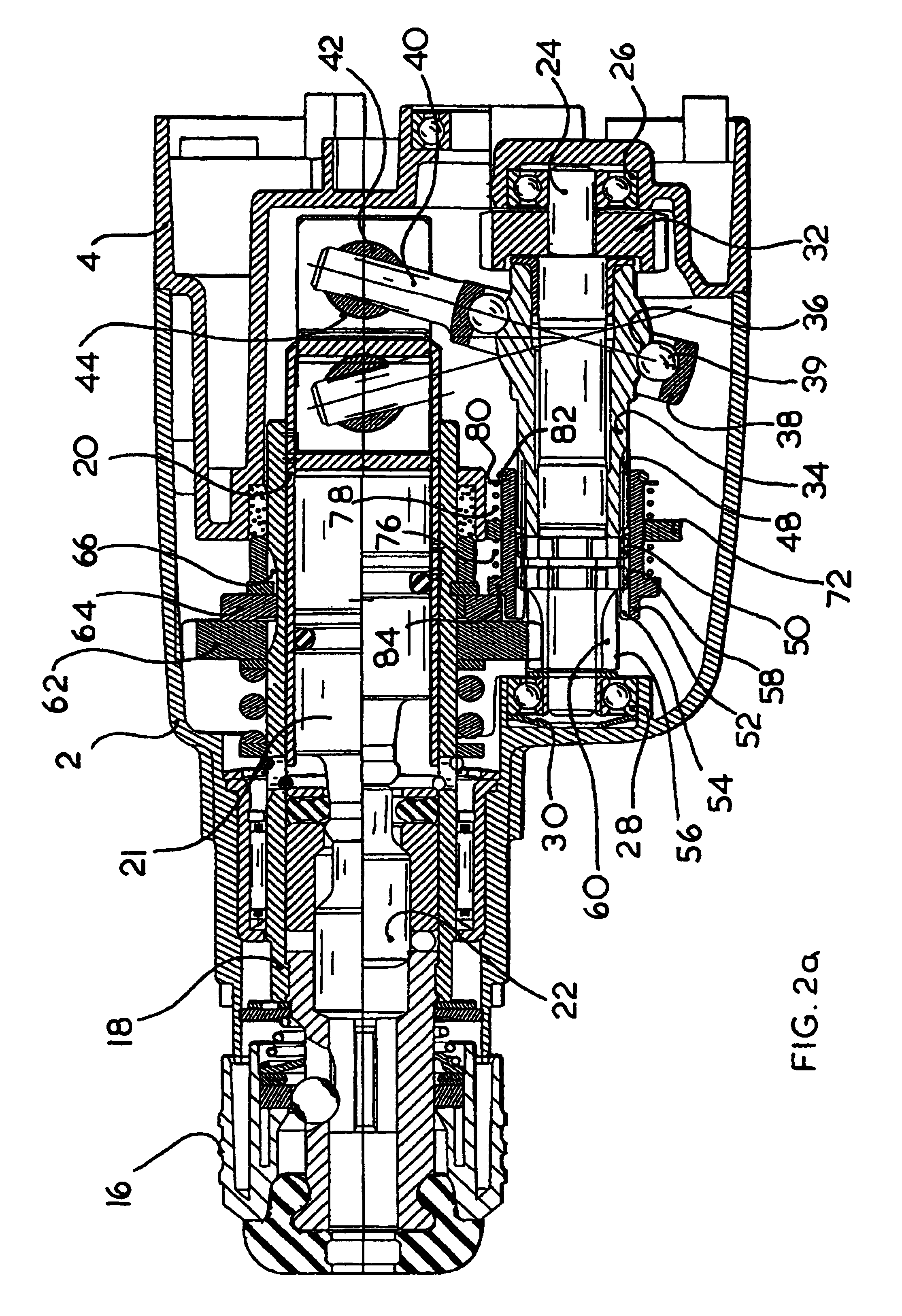Rotary hammer
a rotary hammer and hammer head technology, applied in the field of rotary hammer, can solve the problems of difficult assembly, relatively high manufacturing cost, and relatively complex mechanism of this type, and achieve the effect of simple and reliable mod
- Summary
- Abstract
- Description
- Claims
- Application Information
AI Technical Summary
Benefits of technology
Problems solved by technology
Method used
Image
Examples
Embodiment Construction
[0036]Referring to FIGS. 1, 2a, 2b and 2c, a first embodiment of a rotary hammer includes a forward housing part 2 and a central housing part 4, which are held together by threaded fasteners (not shown) to form a housing for a hammer spindle, a spindle drive arrangement, a hammer drive arrangement and a mode change mechanism. A resilient housing seal 6 fits between the housing parts 2 and 4 in a complementary recess provided in co-operating end surfaces of the housing parts to form a seal between the housing parts. The housing parts 2 and 4 are each formed with semi-circular recesses 2a and 4a, respectively, which co-operate to form a circular recess, lined with a ring section 6a of the housing seal 6, within which a mode change knob 8 is mounted for rotation about a mode change axis 12. The mode change knob 8 has an axle with an enlarged portion 10 which is captured within the hammer housing when the housing parts 2 and 4 are assembled together. In this manner, the mode change knob...
PUM
| Property | Measurement | Unit |
|---|---|---|
| Selectivity | aaaaa | aaaaa |
Abstract
Description
Claims
Application Information
 Login to View More
Login to View More - R&D
- Intellectual Property
- Life Sciences
- Materials
- Tech Scout
- Unparalleled Data Quality
- Higher Quality Content
- 60% Fewer Hallucinations
Browse by: Latest US Patents, China's latest patents, Technical Efficacy Thesaurus, Application Domain, Technology Topic, Popular Technical Reports.
© 2025 PatSnap. All rights reserved.Legal|Privacy policy|Modern Slavery Act Transparency Statement|Sitemap|About US| Contact US: help@patsnap.com



